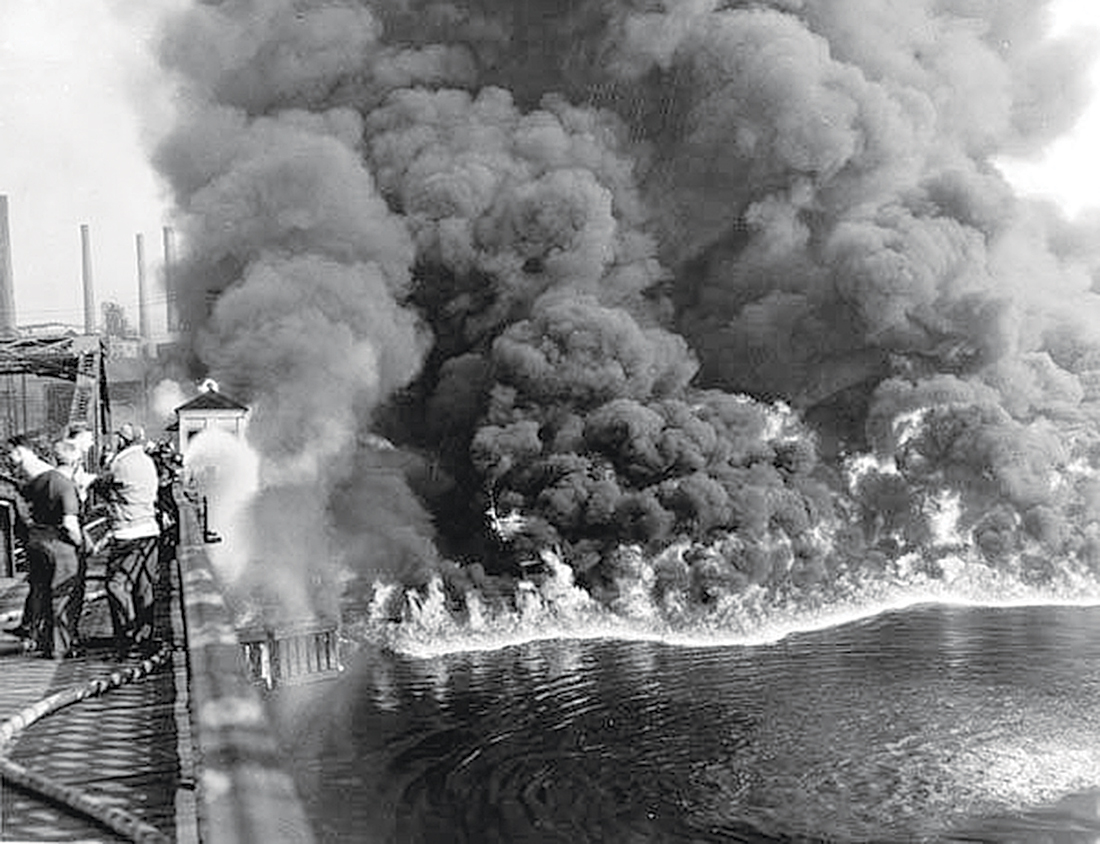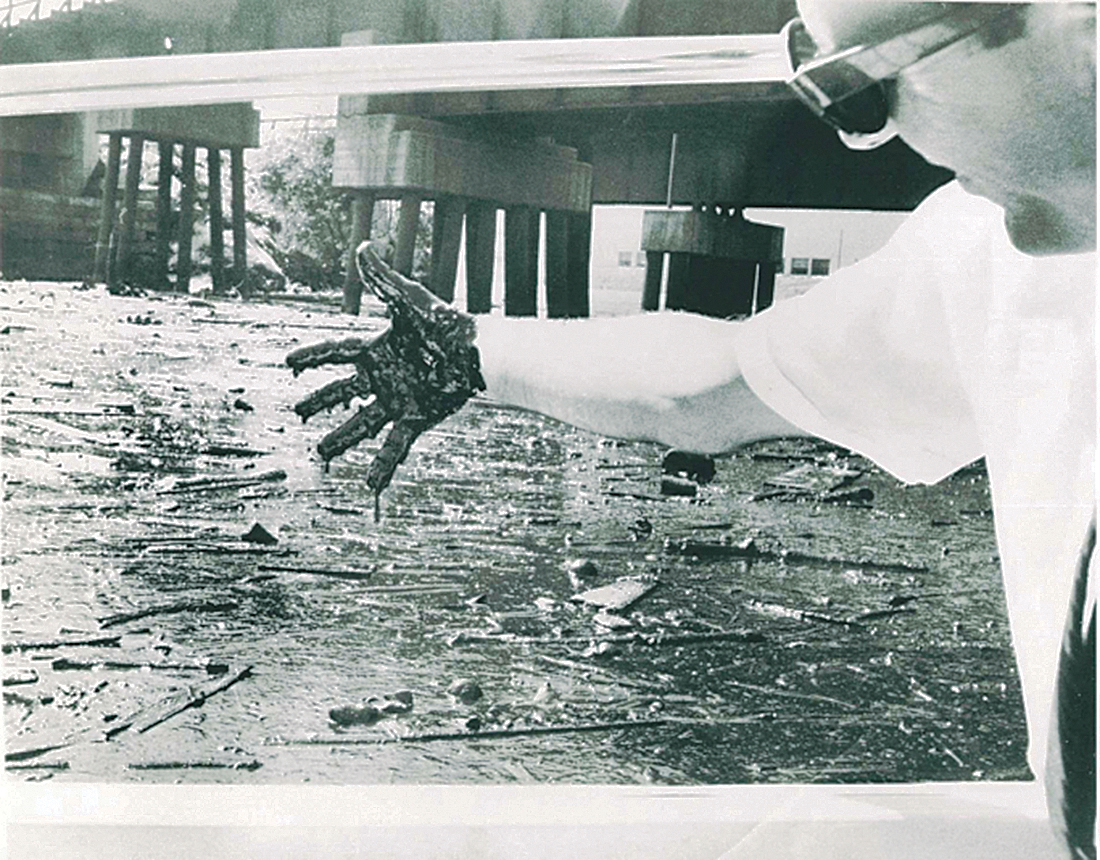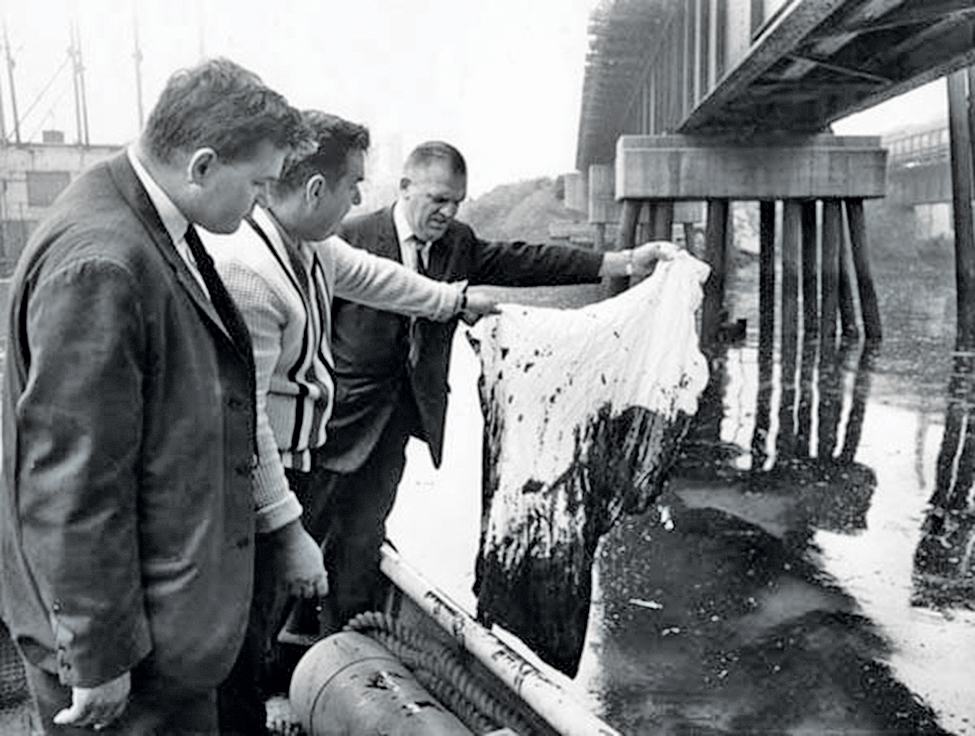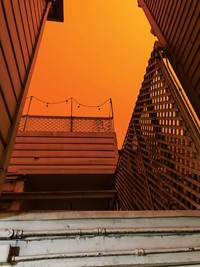Advertisement
Grab your lab coat. Let's get started
Welcome!
Welcome!
Create an account below to get 6 C&EN articles per month, receive newsletters and more - all free.
It seems this is your first time logging in online. Please enter the following information to continue.
As an ACS member you automatically get access to this site. All we need is few more details to create your reading experience.
Not you? Sign in with a different account.
Not you? Sign in with a different account.
ERROR 1
ERROR 1
ERROR 2
ERROR 2
ERROR 2
ERROR 2
ERROR 2
Password and Confirm password must match.
If you have an ACS member number, please enter it here so we can link this account to your membership. (optional)
ERROR 2
ACS values your privacy. By submitting your information, you are gaining access to C&EN and subscribing to our weekly newsletter. We use the information you provide to make your reading experience better, and we will never sell your data to third party members.
Pollution
Marking 50 years since the Cuyahoga River fire, which sparked US environmental action
River no longer blazes, but cleanup not yet complete
by Cheryl Hogue
June 17, 2019
| A version of this story appeared in
Volume 97, Issue 24

Credit: City of Cleveland Photo Bureau | The Cuyahoga River today



June 22, 1969, was a warm, apparently normal summer day along the Cuyahoga River, which flows through Cleveland, Ohio’s industrial section. In the late ’60s, the river passed by steel mills, manufacturing plants, and a paint factory, taking in their discharges of waste. A half century ago in the US, such pollution was widely considered the price of progress.
In brief
The 1969 fire on the Cuyahoga Riverin Cleveland became an iconic symbol of the US environmental movement in the late 1960s and early 1970s that led to the formation of the Environmental Protection Agency and the enactment of the Clean Water Act. Since the blaze a half century ago, state, local, and federal actions under the Clean Water Act have helped clean up the river that runs through Cleveland. The Cuyahoga has met some benchmarks for recovery but still suffers from ecological problems.
Around midday, the Cuyahoga River caught fire. Likely lit by a shower of sparks from a train rumbling across a bridge over the river, a blaze erupted, fed by oily debris floating on the polluted waterway. It wasn’t the first time the Cuyahoga River caught fire, but it would be the last.
Firefighters doused the blaze in less than half an hour, and there are no known photos of the incident. Yet the flaming river became a powerful symbol, helping ignite a political movement that ushered in a revolution in US environmental policy.
Thanks in part to public outcry about the Cuyahoga and other sites of environmental degradation, then-president Richard M. Nixon formed the Environmental Protection Agency in 1970. Congress passed the modern Clean Air Act the same year and the Clean Water Act in 1972. These actions formed the bedrock of US pollution-control policies that remain in place today.
The symbolic waterway is still recovering. Though it is not nearly as polluted as it once was, the Cuyahoga remains degraded. In that sense, the river mirrors the state of environmental quality in areas of the US that were industrial hubs throughout most of the 20th century. The intervening decades have brought pollution-control regulations and government investment in improved wastewater treatment. The Cuyahoga, like many US waterways that were used as free sewers for decades, is rebounding ecologically. But much still needs to change before it merits removal from a US-Canada list of polluted areas in the Great Lakes basin.
A symbol ignites
The fire that made the Cuyahoga River an environmental icon didn’t immediately grab national headlines. Cleveland’s Plain Dealernewspaper covered the blaze in six brief paragraphs tucked deep in the next day’s issue. But Time magazine’s Aug. 1, 1969, issue made the river infamous. The publication included an article about the ecological crisis in the US. The story, which mentioned the fire, featured a dramatic photo from an earlier, larger conflagration on the Cuyahoga in 1952. In the photo, firefighters on a bridge direct streams of water to a tugboat, surrounded by flames, below.
“The image of a river on fire was a shock” to Time’s readers, says William Kovarik, an environmental historian and communications professor at Radford University. The public was aware of the growing concern about pollution, and Rachel Carson’s book Silent Spring had a dramatic impact when it landed on shelves in 1962, he says. The political foment and legislation to protect the environment likely would have taken place irrespective of the 1969 Cuyahoga River fire, Kovarik tells C&EN.
Yet “there was still no sense of environmental crisis until the Cuyahoga River fire,” he says. “News about a burning river was a signal that something had gone very wrong with the environment.”
James R. May, a law professor and environmental policy expert at Widener University Delaware Law School, agrees. The blaze on the Cuyahoga was “a galvanizing event,” he says. It sparked protests for ecological safeguards that spurred lawmakers to act.
The Cuyahoga fire became emblematic of a widespread problem: many US waterways were similarly polluted at the time. Kovarik and May point out that other big cities, including Baltimore; Buffalo, New York; Detroit; and Philadelphia, also had flames erupt on the polluted rivers running through them. Cleveland was a major manufacturing hub at the time, and the Cuyahoga itself had caught on fire at least 13 times since 1868.
The oily debris that fueled the 1969 fire likely came from any of a number of big industries that operated alongside the river. These included a Standard Oil refinery, mills operated by Republic Steel and US Steel, a shipbuilding site, and a Sherwin-Williams paint factory. These and other industrial facilities discharged hundreds of millions of liters of wastewater—from industrial operations and, for many decades, sewage from their thousands of workers—directly into the Cuyahoga each day, says Jennifer Elting, a spokesperson for the Northeast Ohio Regional Sewer District, which serves the Cleveland area.
Reviving an emblematic river
Waste from industry was the main source of the Cuyahoga’s pollution woes. In contrast, residential sewage in the Cleveland area was long handled separately from industrial discharges. The area installed three wastewater treatment plants early in the 20th century, Elting tells C&EN. Two of those plants release treated water into Lake Erie, while the third discharges into the Cuyahoga.
Elting says several changes have improved conditions on the river. Thanks to the Clean Water Act, industries eventually attached their discharge pipes into the public sewage system, subjecting their waste to treatment before discharge. And starting in the early 1980s, companies began pretreating their industrial wastewater to remove pollutants before pumping effluent into the public system, also because of the Clean Water Act, Elting says.
The Northeast Ohio Regional Sewer District has invested some $5 billion to improve wastewater infrastructure since 1972, Elting says. This includes the 1992 expansion of the district’s sewage treatment plant, which discharges into the Cuyahoga. Currently, the district is updating the system it uses to prevent overflows from the combined sewage and storm-drain system during wet weather. It is constructing a tunnel 7.6 m in diameter and nearly 3,000 m long to store a mix of sewage and runoff until treatment plants have the capacity to process it. Elting adds that the district incinerates its sludge, and the process partially powers one of the sewage treatment plants. A local landscaping company uses the ash from the incinerated biosolids as a soil amendment, she says.
Despite these and other cleanup efforts over the past 50 years, the Cuyahoga is still considered an environmentally degraded waterway. Some 75 km of the Cuyahoga River upstream from Lake Erie is deemed one of 43 environmental “areas of concern” under the US-Canada Great Lakes Water Quality Agreement. These areas are considered impaired by pollution or other environmental problems in their ability to support aquatic life or beneficial use by people, such as fishing or maintaining a navigation channel.
According to the EPA, the Cuyahoga remains impaired in a number of ways. The river’s fish population is degraded, some fish have tumors or other deformities, and the finned swimmers have lost habitat. The river’s channel has a set of problems too. Populations of organisms that dwell in the Cuyahoga’s muddy bottom are dwindling. Dredging of the channel to improve navigation is restricted because sediments are contaminated. And water quality remains problematic. The river is prone to algal blooms, and the pollution the Cuyahoga carries into Lake Erie regularly leads to beach closures along the lakefront.
But conditions are improving. In 2017, the EPA removed 2 of the 10 impairments listed for the Cuyahoga. One was “degradation of aesthetics” because the Cuyahoga looks more like a river in its natural state: it no longer has smelly sludge deposits or colorful oil sheens. The other impairment was rescinded after local governments improved public access to the river, creating new parks and trails along its banks and allowing people to paddle boats on and walk or fish along the river. In March, the EPA lifted a third impairment: people can now eat fish taken from the river.
Implications for today
In 2019, after decades of Clean Water Act protections, the idea of a US river catching fire may seem unlikely. Throughout the nation, “water quality in general is better” than it was 50 years ago, law professor May says.
But the kind of flammable industrial pollution found in US waterways 50 years ago now endangers waterways elsewhere. Worldwide, other polluted rivers and lakes have burned in recent years. For example, parts of Bellandur Lake in Bangalore, the city at the center of India’s technology industry, are regularly coated with a froth of contaminants, including hydrocarbons and sewage. This dirty top layer has caught fire multiple times since 2015, according to India’s National Green Tribunal. A major blaze on the lake in February 2017 burned for nearly 8 h before firefighters could extinguish it.
In the US, the 1969 Cuyahoga River fire created an expectation that society would act to address visible ecological challenges, according to Gina McCarthy, a Harvard University professor of the practice of public health and director of the school’s Center for Climate, Health, and the Global Environment. But times have changed, says McCarthy, who served as EPA administrator from 2013 to 2017.
“Today, many of our environmental challenges are not visible,” McCarthy recently told the Harvard Gazette. Climate change and the tainting of drinking water with persistent chemicals such as per- and polyfluoroalkyl substances are invisible, but they are real, long-term problems, she said. “We have to make sure that we use science to create visibility now, with real information and real data.”
Powerful symbols of climate change, such as photos of thin polar bears, have failed to drum up the pressure for US political action that the Cuyahoga River fire did a half century ago. In retrospect, cleaning waterways through pollution controls and improving wastewater treatment seems like an easier lift than making the sweeping changes needed to dramatically cut US greenhouse gas emissions. Yet water pollution was an enormous national problem in 1969—and today the cleanup still isn’t finished.
Even given “irrefutable” scientific evidence that Earth’s climate is changing, May says, people aren’t responding to it like the public did to the Cuyahoga River fire. He chalks this up in part to a society in which people stay indoors more and are plugged into the virtual world of screens.
“People don’t care as much” about the environment as they did a half century ago, May says.




Join the conversation
Contact the reporter
Submit a Letter to the Editor for publication
Engage with us on Twitter